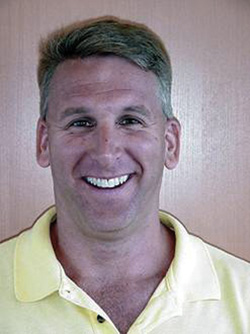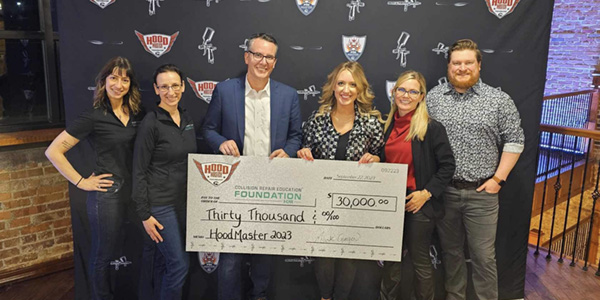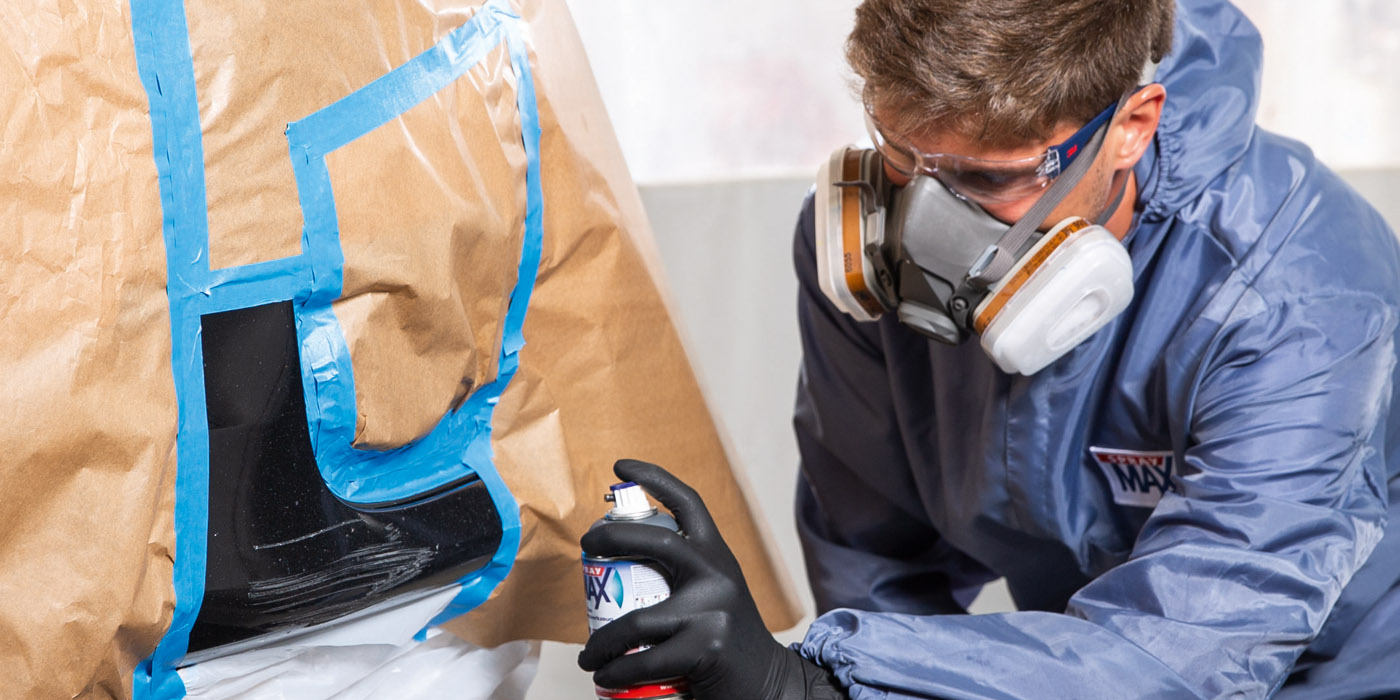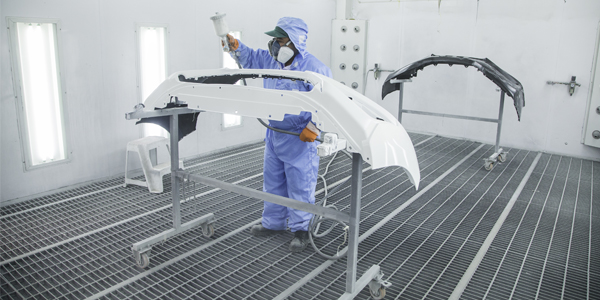
Question answered by: Lee Amaradio Jr.
When I started this article, I was surprised how little I knew about proper corrosion protection methods. As my research continued, I was disappointed when I realized that, as a shop owner for almost 30 years, I had never been very concerned with it. I understand all about weld-through primer, sealer and undercoating, but my research showed me that corrosion protection is much more.
An Important Process
What about all of those panels we grind clean then weld together? When any metal is sandwiched together, some type of coating needs to be used to cover and seal all exposed metal and welds. The manufacturers use E-coat for this and put most vehicles through a dipping process that ensures that there will be no exposed metal that’s susceptible to corrosion. This means that we should never have any partially exposed metal anywhere on the vehicle. The OEMs put so much effort into corrosion protection that it should be just as important to us. If we think we’re turning out a quality repair yet we’re shortcutting the corrosion protection process, we’re fooling ourselves and the consumer.
How important is it for shops to perform corrosion protection? It may depend where those shops are located. It may not be as important to West Coast shops located in regions that experience fairly nice weather year-round, whereas it might be very important to shops located in regions that experience not-so-good weather and therefore are forced to factor that into the longevity of the repair. When a quarter panel or a rocker panel is replaced in the East, corrosion protection is something that will make a big difference when warranting the repair.
Most OEMs require that brand-specific corrosion products be used. If we repair a vehicle using all of the required corrosion protection procedures and the vehicle returns with a rust problem, are we liable or is the manufacturer? We are, which gives us even more reason to educate ourselves so we know exactly what’s required.
Where corrosion protection is concerned, insurance companies won’t be picking up any of the bills, especially when we charge for corrosion protection on our estimates without itemizing any details of what we charged for. The repairer is the one who ultimately warranties everything because the warranty falls to the person who completed the repair, and this includes panel bonding. Even if we follow all of the manufacturer’s recommended guidelines, where corrosion is concerned, we’re responsible.
As vehicles become more high tech and their repair costs go up, our overall repair process should include a detailed and standardized corrosion protection process as well. This goes way beyond just using weld-through primer and sealer. Our corrosion protection process needs to demonstrate an understanding of the entire process as it’s spelled out by the manufacturer. We must know when not to re-weld a replacement panel because the manufacturer requires a pop rivet instead of the welds that were originally used.
Some manufacturers recommend not using weld-through primer because it compromises the integrity of the weld; instead, they suggest using a self-etching primer. Although many OEMs have a different opinion on how it should be done, they all recommend a procedure and specific products that need to be used to address corrosion protection as it pertains to their vehicles.
ALLDATA (www.alldata.com) is a great Web site to find out what the exact repair procedure is for most panel replacements as recommended by the manufacturer. This Web site includes most of the manufacturer’s requirements for corrosion protection.
Even in cases when no manufacturer data are available, we’re still required to warranty what we do. I contacted Mark Torres from I-CAR and couldn’t believe how much technical information on corrosion protection he sent me from I-CAR’s Web site. With this amount of information available, we really have no excuse for not educating ourselves. But remember: The vehicle manufacturer is still the place to start.
Panel bonding is now an accepted method of replacing parts that were previously welded. BMW uses panel bonding with rivets, Jaguar uses bonding with rivets and Mercedes uses rivets in the place of previous welds. Because all of the manufacturers require something different, each repair that requires a non-bolted replacement panel should be researched.
Loads of Liability
If you think that just using a little sealer and undercoating will get you off the hook, you’re mistaken. I’ve personally watched the California Bureau of Automotive Repair (BAR) come into my shop and use flashlights and mirrors to see if anti-corrosion wax was used inside the rocker panel that was replaced. They also looked at every internal weld to see if any were exposed. So when we charge a half hour for labor and $10 for corrosion protection, we open ourselves up to liability for any corrosion that takes place. It becomes our responsibility to make sure that every weld is protected inside and out. It would be a good move on our part to get more specific as to what we’re protecting and put a warranty on it with a time limit, freeing us from any unreasonable liability.
When we charge X number of dollars for corrosion protection, we agree to make sure that the rocker was waxed on the inside and all welds on the quarter panel, rear body panel and floor are protected from corrosion.
Remember, we charged for corrosion protection, and without the details on what we’re charging to protect and for how long, we assume a huge liability for very little money.
Itemize for More Profit
So what should we do now? I think all shops should teach their techs just what’s required with corrosion protection and explain the liability involved if any of the procedures are bypassed. I think we look upon corrosion protection as an included item when it’s not. We could become more profitable by itemizing exactly what we’re doing and charging for each procedure and each material separately. I know that the labor for re-caulk and seal is included in most panel replacements, but the materials and all of the other required procedures are not.
I know that the BAR looks at things differently than we do. Remember, if you list it on your estimate, then you must do it. With something that’s such a gray area like corrosion protection, we all could find ourselves liable.
It’s necessary to do the research and find out what information is available from the vehicle manufacturer, and if nothing is available, then defer to the I-CAR standards for corrosion protection. We can no longer just use sealer and undercoating and say we added the necessary corrosion protection to complete a proper repair. So much information is available when it comes to corrosion protection that I’m only scratching the surface here. And hopefully I’ve planted the seed for each of us to make sure we’re applying everything that’s required.
Because corrosion protection isn’t looked upon as a safety issue (although it could be), many good shops and techs end up just doing the bare minimum. We must think about the consumer and the product that we’re delivering back to them. Are we handing them back something that will fail over time? Are we diminishing the value of their vehicle? In most cases, exposed metal will rust much faster than you could ever imagine.
We owe it to our customers to get corrosion protection right, and we owe it to ourselves to turn the application of any and all corrosion protection products into something that creates a profit and limits our liability.
Writer Lee Amaradio Jr. is the president and founder of Faith Quality Auto Body Inc. in Murrieta, Calif. His 32,000-square-foot state-of-the-art facility employs 65 full-time employees and does $7 million in gross sales. In business since 1979, Lee attributes his success to having a great team of quality people supporting him. Lee says that he “sees the handwriting on the wall” and believes that “now is the time for us to reclaim our industry, before it’s too late.” He can be reached at [email protected].
|
Corrosion Protection Terms
•E-coat: Electro deposition primer applied to metal parts during vehicle assembly and replacement part manufacture to prevent corrosion. This is the OEMs’ primary way of protecting against corrosion. •Corrosion: The chemical reaction of air, moisture or corrosive materials on a metal surface, also called rust or oxidation. •Galvanic corrosion: Corrosion caused by contact of dissimilar metals when moisture is present. (Note: In both definitions of corrosion, we see that moisture is the culprit when it comes to corrosion, so we need to stop the moisture from making contact with the metal.) •Protection: A covering; to shield, to preserve, to guard; “a covering over,” to protect from damage. •Protect: To shield from destruction or damage; to keep from being damaged. (Note: In both definitions of protecting something, we see that the theme is to prevent damage, so our main objective with corrosion protection is to prevent moisture so the metals won’t be damaged or become corroded. This is accomplished by covering all exposed metal with something that will prevent direct exposure to moisture.) |













